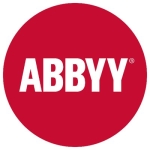What is our primary use case?
There are a lot of legacy applications which are not modernized in terms of exposing APIs or services. Those are the places we are using Robotic Automation a lot.
How has it helped my organization?
Speed. That's the key. When you create a transformation-type of a program, just the discovery itself usually takes between six to eight weeks. But in six weeks you can actually take a robotic solution and move it all the way into production. So speed is definitely the key here.
Cost as well, not just from a software perspective, but cost from an enterprise perspective. Since it's not inclusive, in terms of automation, you can just do it standalone, in its own silo. It's not going to force your existing system or teams, your admin teams, to create new IDs for you or even force them to create new services or APIs for you or expose something from there. They can just keep the way they are doing it right now, but you still automate it.
So speed and agility in terms of not having inclusive automation, both really help.
What is most valuable?
The ability to do screen-level automation becomes key, and people can connect to it. Especially extracting data from a legacy application, putting information into an Excel, running some macros, etc. Those are well-defined use cases from an RPA perspective.
What needs improvement?
Extensibility is the key, especially in terms of the Recorders feature that we have. That should be browser independent. Enhance it, because some people have Chrome, some have Internet Explorer, etc. Allow it to be browser independent.
Integration with PDFs: Not just the ability to read information from PDFs but the ability to write information from PDFs, make it secure, sign it, etc.
An additional enhancement would be: How do you connect to your Microsoft Exchange Servers? Right now, the connection forces Microsoft Exchange to expose a port. Some enterprises are not allowed to expose a port, so it has to go through the firewall and security and token assessment.
And that's another thing: If they can allow a token exchange inside the tool itself, that would help.
What do I think about the stability of the solution?
This solution is still evolving. It is going through the rounds right now. We hope it will become more stable, but right now, since it works on the laptop, it has a lot of dependency on your browser or what type of operating system you have. Sometimes it has dependency on your credentials - are you using a network type of an ID or a local ID, etc. The use case has to be selected properly and then, accordingly, once you scale it up, it works fine. But the use-case selection becomes key here.
What do I think about the scalability of the solution?
Just from an IT perspective, increasing the number of bots or reducing the number of bots on demand is a click of a button. It's as simple as that.
But from a business perspective, scalability takes a different meaning altogether because they want the same kind of bot to do a variety of different use cases. The key comes out in terms of design. At our company, one of the key things that we do regarding bots is to lay out the governance structure and always think from a microservices architecture perspective. Once it is from a microservice architecture perspective from the business side as well, it just looks like Lego blocks. You just combine them together and complete the use case and it becomes more scalable.
How are customer service and technical support?
From an RPA perspective, since this tool is kind of new, there are a lot of incidences that we have discussed a lot with IT support. Right now, in version 11.2, the Control Room gets disconnected frequently, so we are working with IT support on that. Earlier, we had an issue where we wanted to put information into a PDF document and, again, we worked with IT support to get a solution and work around that. So there have been a variety of use cases where we have had to work with and rely heavily on them to give us solutions.
How was the initial setup?
The setup is a little complex as compared to Blueworks Live but it is not as complex as IBM BPM or IBM ODM. From a structure perspective, you still go through creating your three layers - your Bot Creator, Bot Runner, and your Control Room - along with the database. So from a structure perspective, you're still going through the same stages, but the tool itself is so small compared to the size of IBM BPM that it's not very difficult to install. Typically, we allocate two days for installation, which is about 16 hours of effort to do the installation in a test environment.
Which other solutions did I evaluate?
There are a lot more options in the market. For example, Pega. If our clients already have a Pega product, especially the BPM side of Pega, they are often inclined to take Pega's RPA. Then there are the integrated products like Kapow from Kofax. If they already have a Kofax solution, Kapow comes as RPA-based so it's all integrated together and they use it. Then there are standalone products as well in the market, such as UiPath, WorkFusion, and Blue Prism.
Out of all these, UiPath and Blue Prism are the current contenders. Kapow is up and coming and has great potential.
What other advice do I have?
In terms of advice, every tool has an issue. We have evaluated multiple tools and every tool had an issue from a scalability perspective as well as from extensibility perspective. There is no reason not to go with Automation Anywhere. The use case selection is the key. If your use case is heavy on document management, I may not be inclined to suggest Automation Anywhere, but if it is more on the integration side of it, definitely go with IBM RPA.
We are solely working with an IBM product for this solution.
In terms of the important criteria when selecting a tool like this, the starting point for our customers is cost. The other thing that comes into it is the security aspect and, "What will happen to my human workforce if I put bots in there?" It depends upon what the enterprise objectives are. Operational cost saving is definitely a done deal when executing excellent RPA, but in terms of enterprise goals, the overall operational cost on the human side, it's completely based on the business case, and how they want to manage it.
Disclosure: PeerSpot contacted the reviewer to collect the review and to validate authenticity. The reviewer was referred by the vendor, but the review is not subject to editing or approval by the vendor. The reviewer's company has a business relationship with this vendor other than being a customer: Partner.











